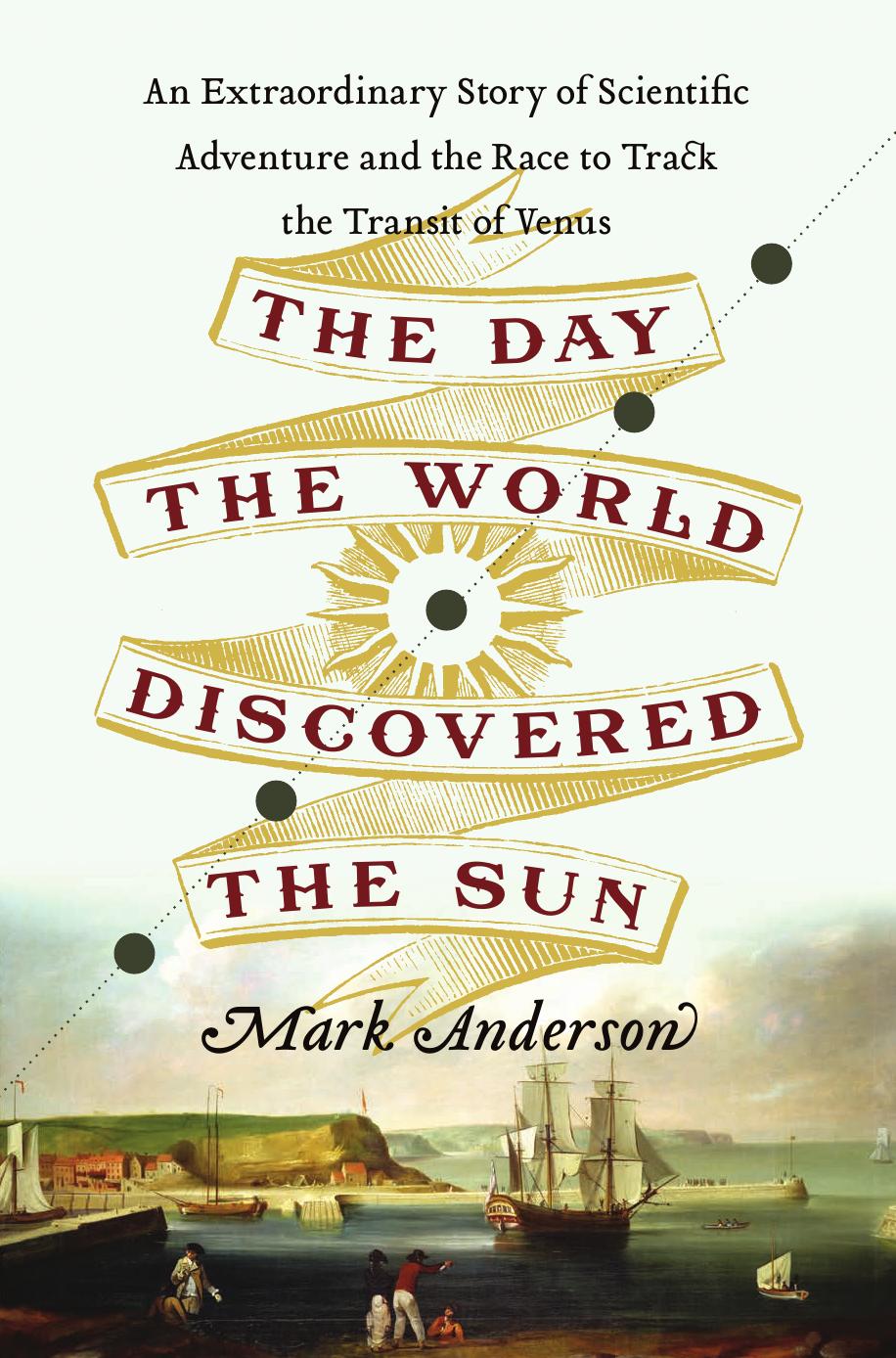The Day the World Discovered the Sun: An Extraordinary Story of Scientific Adventure and the Race to Track the Transit of Venus by Mark Anderson

Author:Mark Anderson [Anderson, Mark]
Language: eng
Format: epub, pdf
Tags: History, Science, Physics, Astrophysics, Astronomy
ISBN: 9780306821066
Publisher: Da Capo Press
Published: 2012-05-08T00:00:00+00:00
NEAR THE EQUATOR, ATLANTIC OCEAN
October 1–26, 1768
Captain Cook and his crew and supernumeraries were not voyaging across the globe just to discover the solar system’s dimensions. They’d also been commissioned to test Britain’s most celebrated navigational breakthrough: Nevil Maskelyne’s Nautical Almanac. Together with four human computers (including Charles Green’s new brother-in-law William Wales) and the Almanac’s “corrector” Richard Dunthorne, Maskelyne had completed a Herculean task.
The debut Almanac of 1767—tabulating a stunning 15,500 solar, lunar, planetary, and stellar positional predictions—had been a midnight oil burner, falling far behind its publishing schedule and coming into print six days into the year it was forecasting. A thousand copies had been printed, which promptly found their way onto ships traversing the planet and into navigational schools in the United Kingdom, North America, and Europe.13
His book was stunning, but now Maskelyne faced the difficult task of bottling his lightning. How to repeat the same impossible labor year in and year out?
Having been satisfied that the team was indeed up to the job, the Board of Longitude authorized Maskelyne to spend whatever he felt he needed to produce almanacs for 1768 and 1769 and, in due course, into the 1770s as well. So Maskelyne hired more computers.14 The Astronomer Royal furthermore rewarded innovation among his team members, giving £50 bonuses to computer Israel Lyons and corrector Dunthorne for finding shortcuts in calculating tables concerning atmospheric phenomena like refraction.15
The board wanted the Endeavour to sail with almanacs for the whole of its projected voyage. Good as they were, Maskelyne’s computers hadn’t yet refined their methods well enough to forecast so far into the future. They did, however, provide Cook and Green with almanacs for 1768 and 1769. Green was becoming very familiar with them as the Endeavour followed the northeast trade winds down to the equator.
On Saturday, October 1, with a “fresh trade” at their back and a hazy cloud cover veiling the morning sun, Green and Cook met on Endeavour’s quarterdeck—the far back region behind the ship’s wheel and mizzenmast. With the swivel gun on its perch nearby, Green and Cook set up their sextants. Green’s, built by the same Jesse Ramsden who’d created Banks’s “electrical machine,” was a fifteen-inch brass device on loan from the Royal Society. Cook owned his own—a twenty-inch, wooden-framed brass instrument with a pole that steadied it to the deck.16
Between 7:19 and 9:02 AM, the pair of explorer-astronomers made thirty-two angular measurements of the moon and sun’s position. Green did most of the work. He found, for instance, the rising sun climbed from 21 degrees and 31 arc minutes to 45 degrees and 40 arc minutes over the 103-minute interval. The duo carried out multiple iterations of three repeated measurements of three values: the altitude of the moon’s upper limb above the horizon, the altitude of the sun’s lower limb and the angular separation between the nearest edges of the two bodies.17 At the level of precision their calculations demanded, they even needed to keep track of whether their altitude measurements
Download
The Day the World Discovered the Sun: An Extraordinary Story of Scientific Adventure and the Race to Track the Transit of Venus by Mark Anderson.pdf
This site does not store any files on its server. We only index and link to content provided by other sites. Please contact the content providers to delete copyright contents if any and email us, we'll remove relevant links or contents immediately.
| Africa | Americas |
| Arctic & Antarctica | Asia |
| Australia & Oceania | Europe |
| Middle East | Russia |
| United States | World |
| Ancient Civilizations | Military |
| Historical Study & Educational Resources |
Cecilia; Or, Memoirs of an Heiress — Volume 1 by Fanny Burney(32434)
Cecilia; Or, Memoirs of an Heiress — Volume 2 by Fanny Burney(31871)
Cecilia; Or, Memoirs of an Heiress — Volume 3 by Fanny Burney(31852)
The Secret History by Donna Tartt(18845)
Sapiens: A Brief History of Humankind by Yuval Noah Harari(14252)
Leonardo da Vinci by Walter Isaacson(13181)
The Radium Girls by Kate Moore(11921)
Sapiens by Yuval Noah Harari(5294)
How Democracies Die by Steven Levitsky & Daniel Ziblatt(5128)
The Wind in My Hair by Masih Alinejad(5034)
Homo Deus: A Brief History of Tomorrow by Yuval Noah Harari(4823)
Endurance: Shackleton's Incredible Voyage by Alfred Lansing(4676)
The Silk Roads by Peter Frankopan(4457)
Man's Search for Meaning by Viktor Frankl(4424)
Millionaire: The Philanderer, Gambler, and Duelist Who Invented Modern Finance by Janet Gleeson(4374)
The Rape of Nanking by Iris Chang(4137)
Joan of Arc by Mary Gordon(4013)
The Motorcycle Diaries by Ernesto Che Guevara(4012)
Hitler in Los Angeles by Steven J. Ross(3900)
